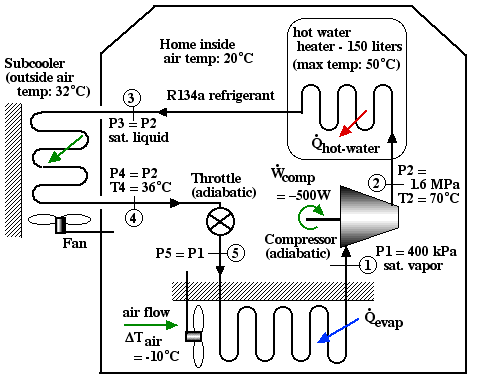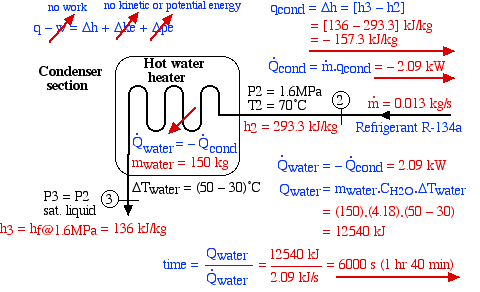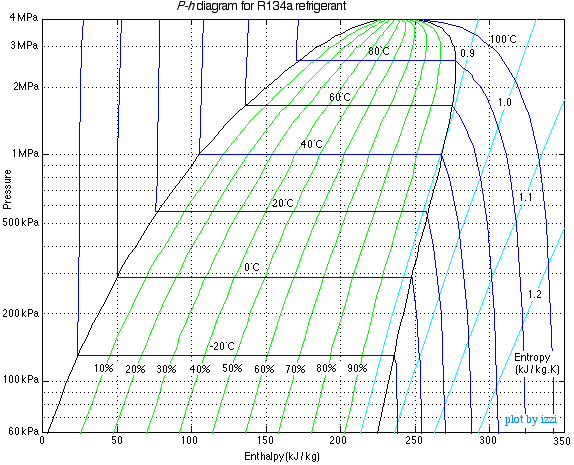
We wish to do a preliminary thermodynamic evaluation of a 500W input power home heat pump system as applied to summertime use for both hot water heating to 50°C, and space cooling (air conditioning), and thus maintain the inside home temperature at a comfortable 20°C..
.
This unique combined air conditioning / hot water heating system is designed to absorb heat from the air flowing through the insulated duct in order to pump heat into the hot water heating tank. The fan provides enough air flow over the evaporator to cool the air by 10°C as it passes through the duct, and the hot water is heated to a maximum of 50°C. In this analysis we neglect the power provided to the fan. We also assume that both the duct and the hot water tank are externally adiabatic.
Carefully draw the complete cycle above on the pressure-enthalpy [P-h] diagram provided below, showing clearly all five processes (1) - (2) - (3) -(4) - (5) -(1). Using the conditions shown on the diagram above and values obtained from the R134a tables:
a) Determine the enthalpy values at all five stations [kJ/kg], and indicate these values on the P-h diagram.
b) Determine the mass flow rate of the refrigerant R134a [0.0133 kg/s]
c) Determine the heat
rejected by the condenser [-2.09
kW]. Assuming that all this heat is
absorbed by the water in the hot water tank, determine the time
taken for 150 liters of water at 30°C to reach the required
temperature of 50°C [1 hr
40 min]. (Note:
The hot water heater is not a flow system, thus we need to first
evaluate the energy required to heat the water [12540 kJ]. This
section is solved as shown below)
d) Determine the heat power absorbed by the refrigerant in the evaporator [2.04 kW]. Assuming that all this heat is absorbed from the air in the duct and neglecting the fan power, determine the required mass flow rate of the in order reduce the air temperature by 10°C while passing through the duct [0.204 kg/s].
e) Determine the Coefficient of Performance of the hot water heater (COPHW) (defined as the heat rejected by the condenser divided by the work done on the compressor) [COPHW = 4.17].
f) Determine the Coefficient of Performance of the air conditioner (COPAC) (defined as the heat absorbed by the evaporator divided by the work done on the compressor) [COPAC = 4.07].
g) If we bypass the outside subcooler (State (4) becomes saturated liquid as in State (3)) determine the change in Coefficient of Performance of the air conditioner evaluated above. Indicate this change on the P-h diagram and discuss the relevance of the outside subcooling section in this system. [COPAC reduced to 3.17]

__________________________________________________________________________________________